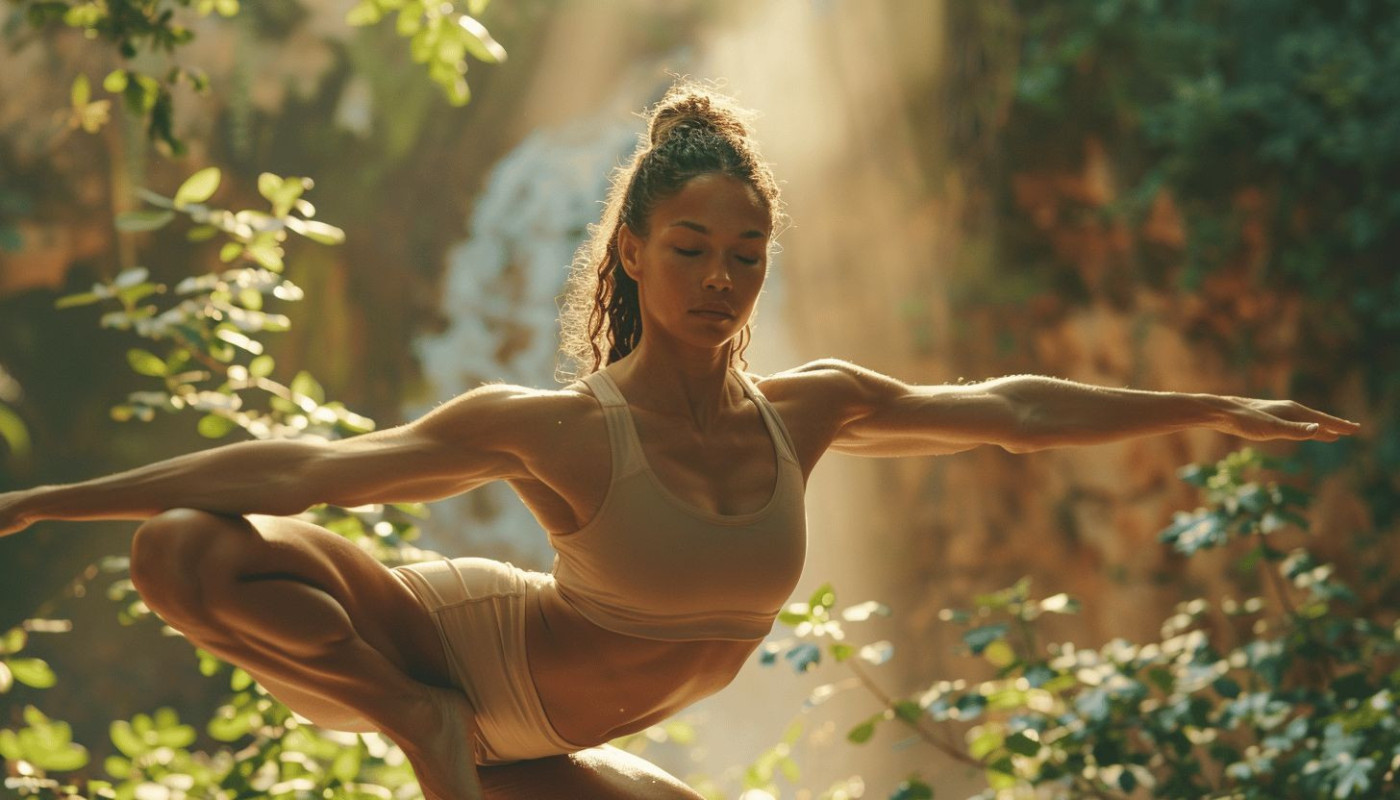Table of contents
Discover the synergy between yoga and gymnastics as we explore tailored yoga routines aimed at boosting flexibility for gymnasts. The integration of yoga into a gymnast's training regimen can be transformative, providing enhanced range of motion, injury prevention, and a harmonious balance between strength and suppleness. This exploration will serve as a guide to effectively incorporate yoga postures and sequences to complement the rigorous demands of gymnastics, inviting athletes to elevate their performance through mindful movement and flexibility.
Understanding the Importance of Flexibility in Gymnastics
Flexibility stands as a fundamental attribute of gymnastics, vital for athletes striving to master the sport's intricate maneuvers. It is the springboard that allows for the seamless execution of twists, flips, and splits, setting the stage for a performance that exudes both elegance and power. A gymnast's dedication to enhancing their flexibility can lead to significant advancements in their skillset, expanding the repertoire of movements they can perform with precision. Engaging in flexibility training, such as yoga for gymnasts, is instrumental in this developmental process.
When considering the role of gymnastics flexibility, it's paramount to acknowledge the element of injury prevention. A more pliable body is less prone to the strains and sprains that can sideline an athlete. Yoga routines, specifically tailored for gymnasts, help to improve range of motion, ensuring that joints can handle the rigorous demands of the sport. These routines often incorporate proprioceptive neuromuscular facilitation, an advanced stretching technique that can further enhance muscular elasticity and control. As athletes integrate such methods into their training, they fortify their bodies against the rigors of competition.
In summary, flexibility is the cornerstone of gymnastic prowess. It is the canvas upon which athletes paint their most stunning physical feats. By melding the age-old practice of yoga with modern sports science, gymnasts can elevate their performance, unlocking new levels of athletic capability and guarding against the ever-present threat of injury.
The Intersection of Yoga and Gymnastics Training
Yoga and gymnastics are intrinsically aligned with their emphasis on enhancing flexibility, developing strength, and achieving superior body control. The practice of yoga cross-training is becoming increasingly popular among gymnasts seeking to improve their performance and reduce injury risks. With yoga's deep stretches and focus on alignment, athletes can unlock greater ranges of motion, making it a valuable asset for those aiming to refine their body control in gymnastics. Notably, the yoga benefits for athletes extend beyond physical flexibility, offering mental clarity and stress reduction, which are beneficial during high-stakes competitions.
Integrating yoga into a gymnast's regimen as a form of complementary training can lead to improved balance and proprioception, both of which are pivotal for executing complex routines with precision. Moreover, the emphasis on controlled breathing in yoga fosters an enhanced awareness of body movements, contributing to a gymnast's ability to maintain stability and composure. Thus, incorporating yoga for balance not only augments an athlete's physical capabilities but also fortifies their mental resilience. Given these synergies, a sports physiologist with a comprehensive understanding of the biomechanics in both yoga and gymnastics would advocate for this holistic approach to cross-training, recognizing its potential to cultivate a harmonious blend of flexibility, strength, and poise.
Designing a Yoga Routine for Gymnasts
Gymnastics demands a high degree of flexibility, strength, and control, which can be significantly enhanced by incorporating targeted yoga stretches into an athlete's training regimen. An expertly designed yoga routine for gymnasts focuses on a series of yoga postures for gymnasts that promote hip flexor flexibility, vital for executing splits and high kicks with ease. These targeted yoga stretches especially benefit the hip flexors, a group of muscles that are often overworked and tight in gymnasts, allowing for more fluid movements and a reduced risk of injury. Additionally, yoga for shoulder health is integral to the routine, incorporating poses that stabilize and strengthen the shoulder girdle, enabling gymnasts to support their body weight with grace and power during routines. To further support the spine's health and the demands placed upon it by gymnastics, back strengthening yoga sequences are also included, focusing on building the core and back muscles necessary for maintaining proper posture and executing complex twists and flips. A yoga instructor with a sports training background will skillfully integrate these elements while possibly incorporating myofascial release techniques to alleviate muscle tightness and enhance overall mobility. This holistic approach to yoga for gymnasts not only improves performance but also contributes to a well-rounded athletic practice.
Incorporating Dynamic and Static Stretching
To maximize the potential for increasing flexibility in gymnastics, it is necessary to blend both dynamic and static stretching into a yoga routine. The dynamic stretching benefits are particularly significant as they involve movement-based stretches that prepare the body for the range of motions required in gymnastics. These movements increase blood flow, warm up the muscles, and improve overall mobility, which is conducive to dynamic alignment—a concept referring to the efficient coordination of body parts during movement.
On the other hand, static stretching for gymnasts is equally beneficial. It involves holding a stretch for a prolonged period, allowing the muscles to relax and elongate, which can help in preventing muscle stiffness. This type of stretching is often recommended post-workout to aid in recovery and to further improve flexibility. When these static stretches are incorporated into a yoga stretching techniques repertoire, they contribute significantly to a well-rounded flexibility routine. Engaging in a carefully structured yoga practice that includes these elements will not only enhance a gymnast's performance but also reduce the risk of injury.
Adapting Yoga Routines for Individual Needs
The sport of gymnastics requires a precise approach to training, one that acknowledges the individual athlete's unique physical capabilities and limitations. To enhance a gymnast's flexibility through yoga, a personalized yoga routine is indispensable. It is beneficial to consider yoga modifications for gymnasts to ensure that each pose supports their specific goals and addresses their areas of tightness or imbalance. Such individual flexibility training is not only about achieving greater ranges of motion but also about promoting overall body alignment and balance.
When tailoring a yoga practice, it is paramount to adapt asanas for different skill levels, taking into account any previous injuries. This approach allows gymnasts to safely engage in yoga for injury recovery and helps prevent further harm. The guidance of a professional, especially a physical therapist with knowledge of both gymnastics and yoga therapy, can be invaluable. This expert can enhance a gymnast's kinesthetic awareness—the understanding of their body's position and movement in space—thus aiding in the prevention of injuries and facilitating more effective training.






